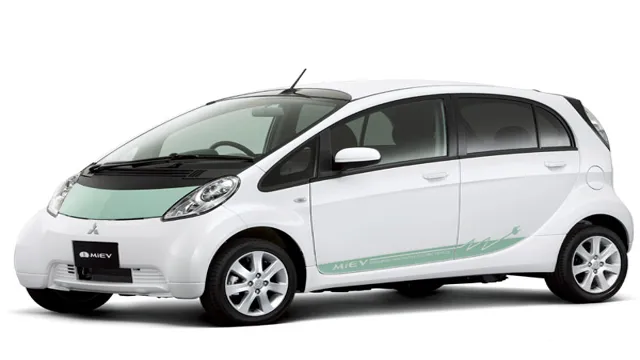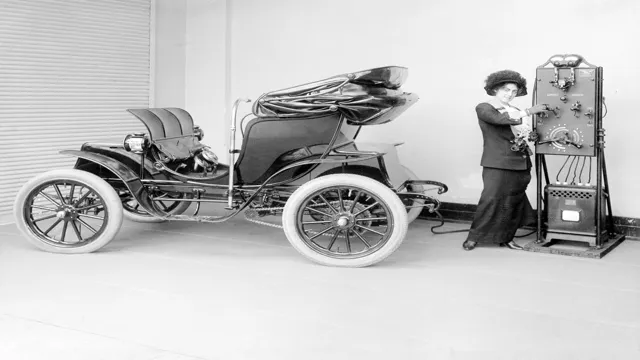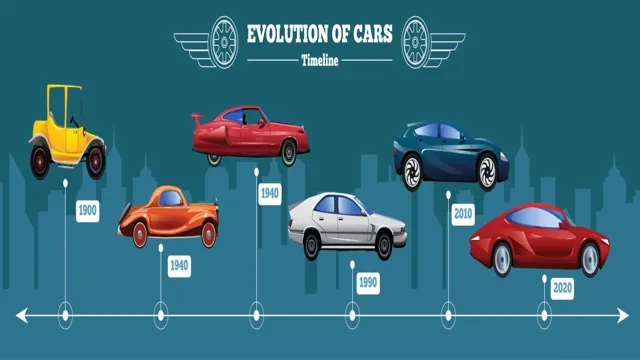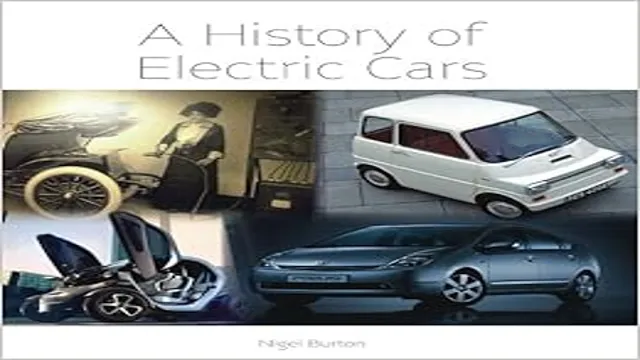From Past to Present: Tracing the Fascinating Evolution of Electric Cars in US History
Electric cars in US history have come a long way from the early attempts in the 1800s to today’s sleek and modern vehicles. The idea of an electric car was first introduced in the early 1800s, but it wasn’t until the late 19th and early 20th century that electric cars began to gain traction thanks to inventors like Thomas Davenport and William Morrison. However, with the advent of gasoline-powered cars, the popularity of electric cars began to decline until the 1990s when several automakers, including General Motors and Toyota, began exploring hybrid and electric technologies.
Today, electric cars are becoming more commonplace on American roads as more drivers look for eco-friendly and sustainable transportation options. Let’s take a closer look at the fascinating evolution of electric cars in US history.
Early Attempts
Electric cars in US history have been around for almost two centuries, but their mainstream adoption has been sluggish despite their numerous benefits. Back in the 1830s, Robert Anderson, a Scottish inventor, built the first electric vehicle prototype. However, it wasn’t until the late 1800s that electric cars started gaining popularity.
The electric car became a symbol of innovation and progress. By the turn of the 20th century, electric vehicles counted for approximately one-third of the cars in the United States. However, the rising popularity of gasoline-powered cars eventually eclipsed electric vehicles, and their use faded into obscurity.
Despite various attempts to revive the technology in the 1960s and 70s, the trend didn’t catch on. Even with improved battery technology and a renewed push for cleaner energy, electric cars still account for a fraction of the cars on American roads. However, with greater environmental awareness and advancements in battery technology, electric cars are making a comeback and poised to become a mainstream technology in the US.
Late 1800s electric vehicles like Baker Electric and Detroit Electric
When it comes to early attempts at electric vehicles, the late 1800s saw some notable players like the Baker Electric and Detroit Electric. These vehicles were a far cry from the advanced electric cars we see today, but they were a significant milestone in the evolution of automobiles. Electric cars of that time were seen as luxury vehicles for the wealthy, and they were quiet, easy to operate, and required little maintenance.
However, the technology was still developing, and early electric cars were limited in range and speed. Despite these limitations, electric vehicles were popular in urban areas, where they could be easily charged from central stations. Today, thanks to advancements in technology, electric cars are an eco-friendly alternative to traditional gasoline-powered vehicles, and many automakers offer a range of electric cars that have impressive range, speed, and features.
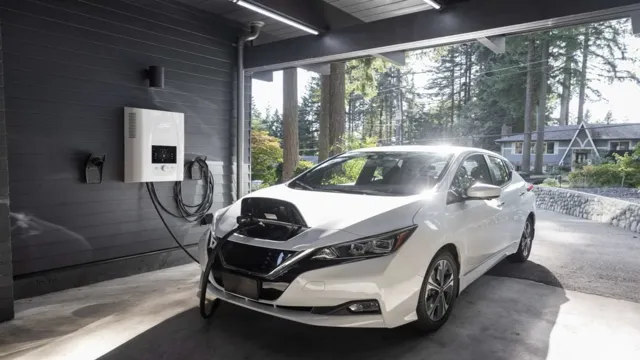
1900s decline after gas-powered car popularity
As the gas-powered car grew in popularity in the early 1900s, attempts at alternative fuel sources declined. It seemed that gasoline was the way of the future, and no one wanted to put their efforts into finding alternate sources of energy. But as we look back on that time, it’s clear that we missed out on some valuable opportunities.
While the internal combustion engine made cars more practical and easier to use, it also created a dependency on fossil fuels and contributed to pollution. It’s important to remember that just because something is popular, doesn’t mean it’s the best option. As we move forward, we must consider all possibilities for creating sustainable energy sources.
We owe it to ourselves and to future generations to be proactive, creative, and open-minded. Only through forward-thinking and innovation can we truly create a better future for everyone.
Modern Resurgence
While electric cars may seem like a modern invention, their history in the United States dates back over a century. In fact, at the turn of the 20th century, electric vehicles were quite popular, especially among women drivers. These early electric cars were quiet, clean, and easy to operate, making them a popular choice for city commuting.
However, the invention of the internal combustion engine, along with advancements in gasoline production and distribution, led to a decline in electric car use. It wasn’t until recently, with rising concerns about air pollution and ecological issues, that electric cars have made a resurgence in popularity. With advancements in battery technology and charging infrastructure, electric cars are becoming a viable and desirable option for drivers looking for a cleaner, more sustainable mode of transportation.
The electric car has come a long way since its early days in US history, and it looks like it’s here to stay.
California Air Resources Board mandate in 1990s
The California Air Resources Board mandate in the 1990s marked a turning point in environmental conservation efforts. This mandate aimed to reduce the amount of air contaminants emitted by cars and trucks in the state by 50%. The move was met with mixed reactions, but it was a necessary step in mitigating the impact of greenhouse gases on the environment.
Since then, the movement towards cleaner air technology has picked up pace. In recent years, there has been a resurgence in modernizing engines to meet emission standards. The US EPA’s Tier 4 standard, which requires engine manufacturers to develop engines that emit fewer pollutants, has seen the development of cleaner diesel engines that emit lower levels of carbon dioxide.
By embracing cleaner air technology, we can reduce our carbon footprint and protect the environment for generations to come. It may be a challenging journey, but it’s a worthy one.
Tesla Motors’ impact on industry
Tesla Motors has been at the forefront of the modern resurgence of the automotive industry, introducing innovative electric vehicles that have disrupted the traditional gasoline-powered market. By offering sustainable, eco-friendly alternatives to fossil fuels, Tesla has ignited a movement towards clean energy and has prompted other automakers to follow suit. The company’s impact on the industry has been immense, showcasing the potential for electric vehicles to be both practical and desirable.
With sleek designs, advanced technologies, and impressive performance, Tesla vehicles have carved out a unique niche in the market and have changed the perception of what electric cars can be. As a result, they have inspired other automakers to invest in their electric vehicle offerings and to create their own sustainable solutions. The Tesla Motors phenomenon demonstrates the power of innovation and disruption to transform industries and create a better future through sustainable practices.
Current market share and growth projections
The modern resurgence of the market for consumer goods has been astounding in recent years. With the advent of e-commerce, companies like Amazon and Alibaba have been able to deliver products straight to the customer’s doorstep at lightning-fast speeds. As a result, the market for consumer goods has grown exponentially, and it continues to do so.
In fact, according to a recent report by IBISWorld, the market for online retail sales is projected to grow by 19% over the next five years, reaching a worth of $528 billion by 202
This means that online retail will account for nearly 20% of all retail sales in the US by that year. On top of that, there has been a steady growth in the market share of mobile devices for online purchases. In 2018 alone, mobile commerce accounted for 5
9% of all online purchases in the US. This trend is set to continue as more and more consumers adopt mobile devices for everyday use. With such explosive growth projections, it’s clear that the consumer goods market is here to stay.
Future Possibilities
Electric cars have a long history in the United States, dating back to the 19th century, and though they have had their struggles, the future of electric cars in the US is looking bright. In the early 1900s, electric cars were incredibly popular, with over 30,000 of them on the road in New York City alone. However, the introduction of the Model T by Henry Ford and the discovery of Texas crude oil soon led to the decline of electric cars in America.
The oil crisis of the 1970s sparked renewed interest in electric cars, but it wasn’t until Tesla Motors came onto the scene in the early 2000s that electric vehicles began to gain significant traction. Today, electric cars are becoming more affordable and accessible to the average American, with a growing number of charging stations and incentives to make the switch from gas-powered cars. The future possibilities for electric cars in the US are endless, with the potential to revolutionize transportation and promote a greener, more sustainable future.
Advancements in battery technology and range
As electric vehicles continue to gain popularity, advancements in battery technology and range are becoming increasingly important. One of the most exciting possibilities for the future of electric vehicles is the development of solid-state batteries. These batteries promise to be more energy-dense, safer, and longer-lasting than current lithium-ion batteries.
They could also be more efficient in colder temperatures, making them an ideal solution for electric vehicles in areas with extreme weather conditions. Moreover, Tesla has been working on developing new battery technology that can last for a million miles of driving or more. This would make electric vehicles a viable option for even the most frequent of commuters or long-distance travelers.
As the technology surrounding batteries and range continues to improve, it is likely that electric vehicles will become an even more compelling option for drivers looking to lower their carbon footprint and save money on gas.
Potential impact on the environment and oil industry
The rise of renewable energy sources and the push for a greener and more sustainable world could potentially have a significant impact on the environment and the oil industry. As more countries shift towards green energy, the demand for oil may decrease, causing a decrease in prices that may harm the profits of oil companies. However, this shift could also lead to a decrease in harmful emissions that come from burning oil, reducing the negative impact on the environment.
While some argue that renewable energy sources are not yet as economically viable as traditional sources, the decreasing costs of renewable energy technology and the growing public concern for the environment may lead to a shift towards greener energy. The potential benefits of renewable energy sources, such as reduced emissions and decreased dependence on foreign oil, should not be ignored by companies in the oil industry. Companies that adapt and invest in sustainable practices may see long-term benefits, as consumer preferences shift towards more eco-friendly options.
The need for evolving technologies that reduce the environmental impact of the oil industry should also be embraced, as it provides opportunities for growth and innovation. As individuals, we can also play a role in this shift by making choices that reduce our own carbon footprint and support companies that prioritize sustainability.
Conclusion
In the history of the United States, there has always been a fascination with energy and innovation. From the advent of electricity to the rise of the automobile, Americans have never been shy about embracing new technology. With the recent surge in popularity of electric cars, it seems that we’re once again at the forefront of a new era of energy-consciousness.
But before we congratulate ourselves too much, let’s take a moment to remember that the road to progress is seldom smooth, and that the true test of our ingenuity will be how we respond to the challenges that inevitably lie ahead. Only time will tell whether or not electric cars will become a lasting part of American history, but one thing is certain: the future of energy is electric, and we’d be wise to pay attention. So buckle up, folks – it looks like we’re in for one electrifying ride!”
FAQs
When were electric cars first introduced in the US?
Electric cars were first introduced in the US in the late 19th century, around the same time as gasoline-powered cars.
What was the popularity of electric cars compared to gasoline cars in the early days?
In the early days of automobiles, electric cars were actually more popular than gasoline cars due to their ease of use and quiet operation.
What led to the decline of electric cars in the mid-20th century?
The decline of electric cars in the mid-20th century can be attributed to several factors, such as the widespread availability of gasoline and the development of more efficient and powerful gasoline engines.
What has led to the recent resurgence of electric cars in the US?
The recent resurgence of electric cars in the US is largely due to advancements in battery technology, government incentives, and increased concern over climate change and air pollution.

